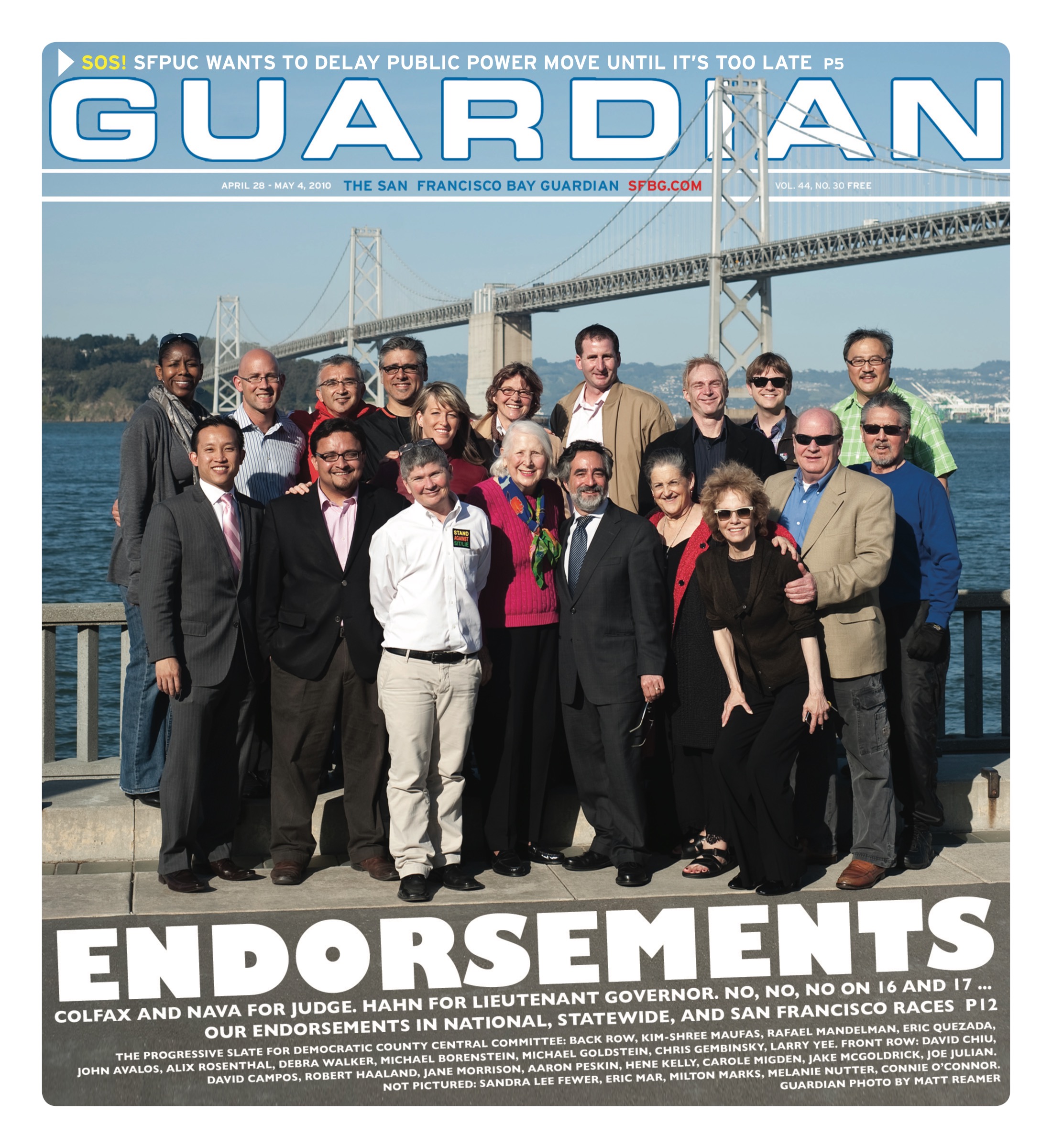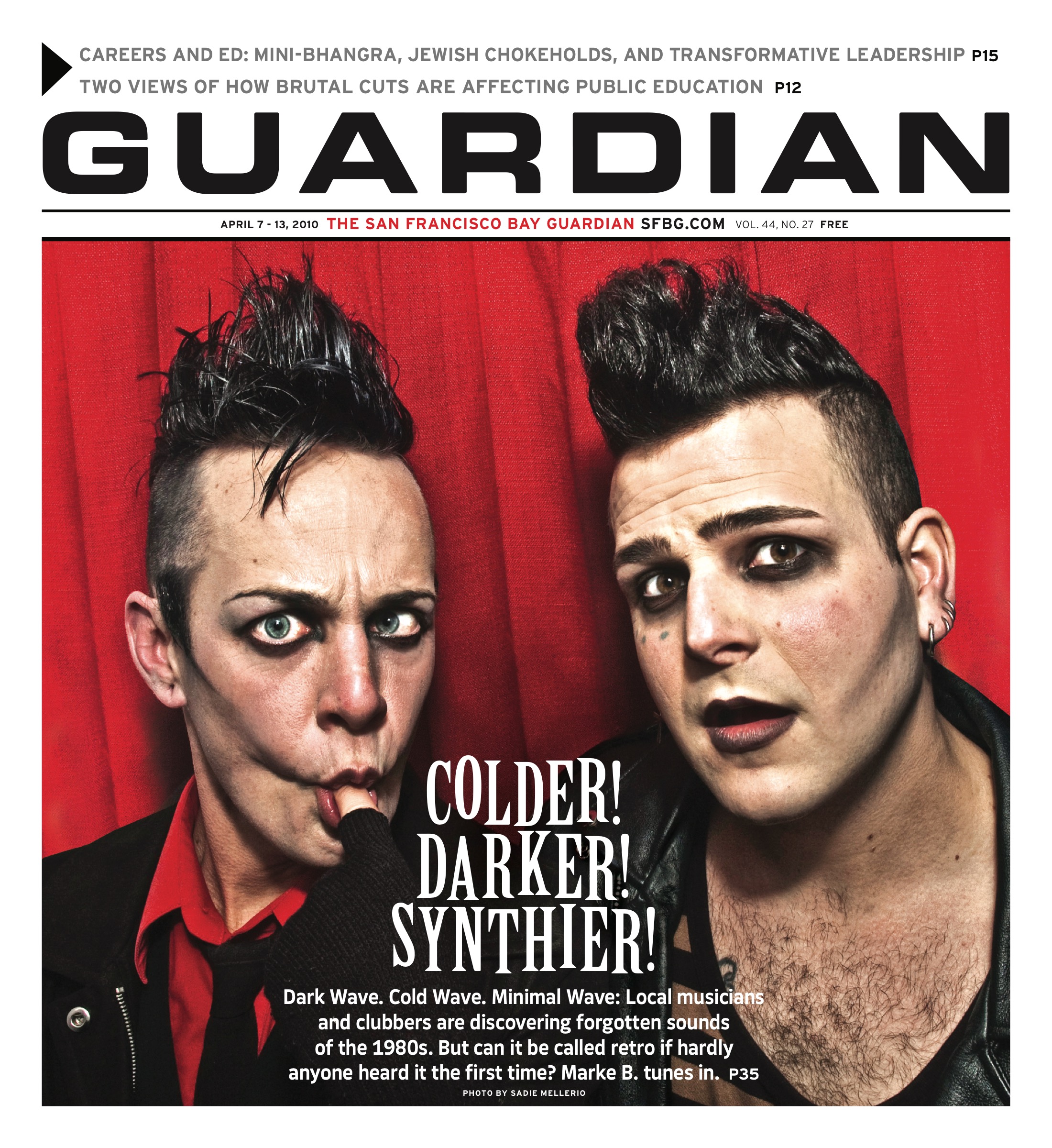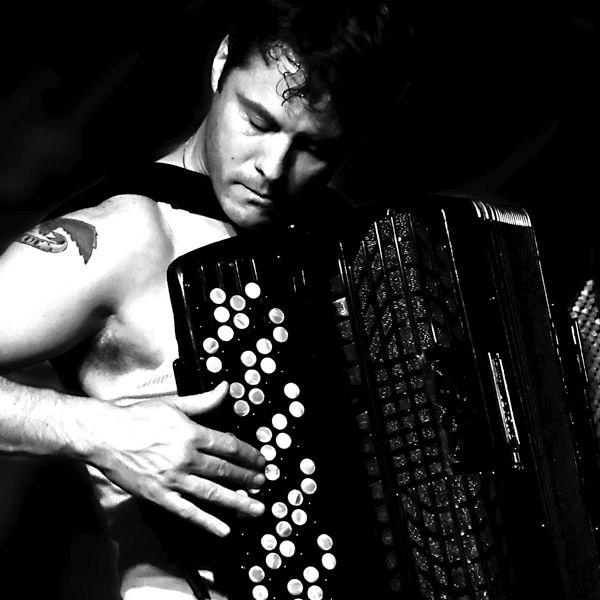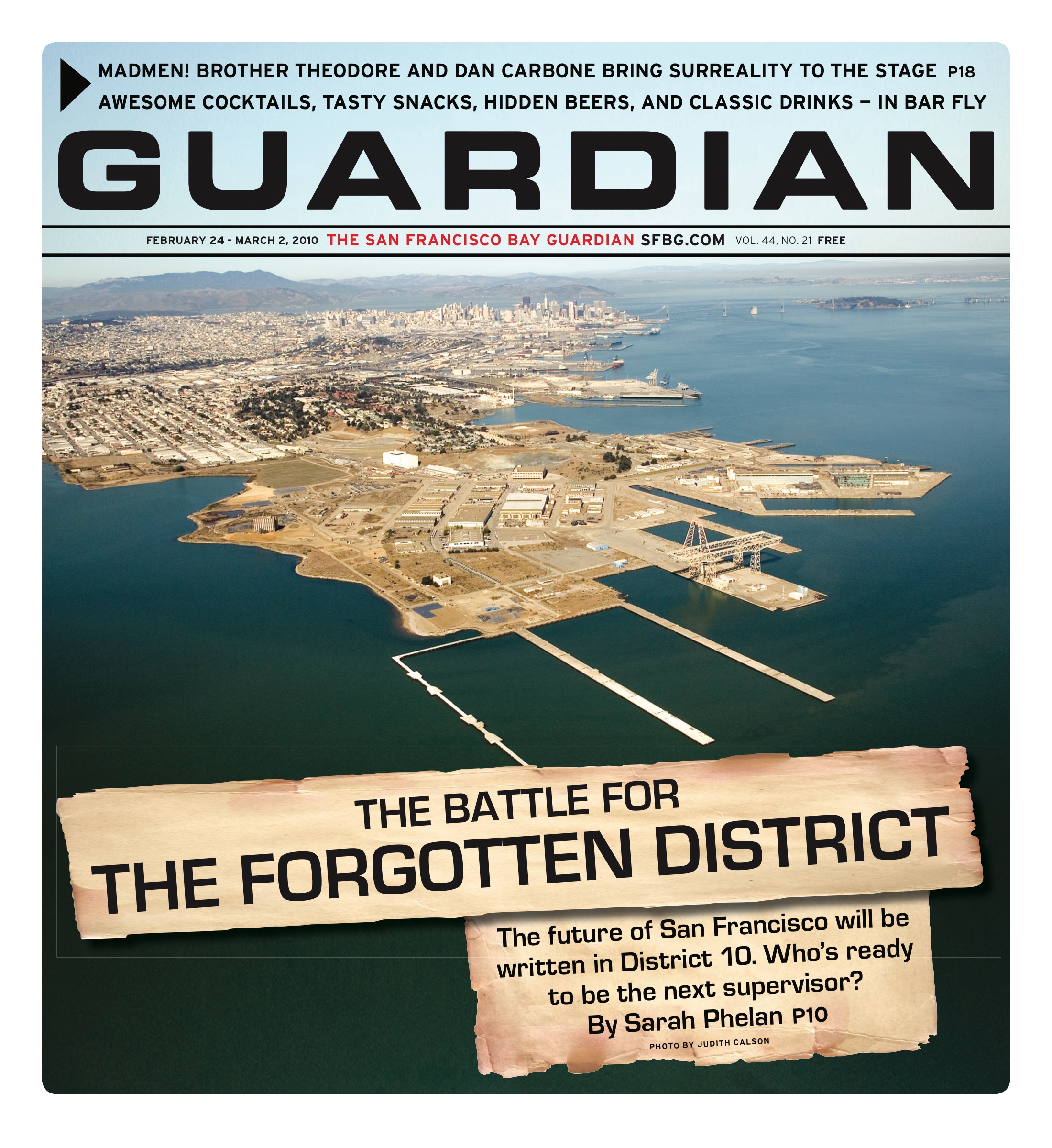a&eletters@sfbg.com
It’s safe to say that Achim Bergmann of Trikont, Germany’s oldest independent record label, has an affinity for the underdog. From his favorite soccer team (Munich’s best-loved losers, the 1860 Löwen) to his favorite musicians, it is outsiders who attract Bergmann’s attentions, personal and professional, rather than the heroes of the mainstream. Of course, outsider music comes in many variations, and somehow Trikont manages to embrace them all. From Finnish Tango to American yodeling, German-language reggae to Turkish techno, British punk to Black Panther soul, the label’s eclectic catalog has been transcending language boundaries and international borders long before "world music" became a Billboard buzzword.
First founded in 1967 as a radical publishing arm of the SDS, Trikont started publishing books of political and philosophical ideology collected mainly from the so-called "third world" (Trikont, short for trikontinentale, is a colloquial expression for same), including the Bolivian diaries of Che Guevera, the incendiary Revolution in the Revolution by Régis Debray, and the ubiquitous Little Red Book or Quotations from Chairman Mao. In 1971, Trikont released its first record album — a compilation of neoprimitive folk and radical "self-made music" titled Wir Befreien Uns Selbst or We Free Ourselves, a phrase that could stand as the label’s unofficial motto even today.
"It was very simple, very rough, not polished at all," Bergmann tells me as we sit at a wobbly kitchen table in Trikont’s Munich-Obergiesing headquarters. His youthful exuberance belies his bushy, white Ernest Hemingway beard. When Wir Befreien Uns Selbst sold 20,000 copies, for Bergmann it sparked the realization that "music was the non-dogmatic part of left-radicalism, a way to connect with the working class." It also provided the radicals with music — beyond the endlessly circuutf8g MC5 and Rolling Stones albums — they could call their own. Trikont’s official motto, "our own voice," reflects this ideal to this day.
And what a range of voices call the label home. After splitting from the book publishing side of the business in 1980, Trikont’s focus shifted from being a mouthpiece for the radical German left to being a conduit for what Bergmann terms "popular music" from all over the world. Not popular in the MTV hit-parade sense, but popular as in sphere-of-influence: from the emblematic zydeco of the Louisiana Bayou to the dramatic excesses of Mexican bolero, the label excels at tapping into that particular cultural zeitgeist expressible only through music. It does so through exactingly executed compilations curated by DJs, music journalists, and fellow aficionados of the slightly askew. Their ranks include a veritable who’s who of luminaries from the European music scene — John Peel, Jon Savage, Jonathan Fischer, Thomas Meineke, Bernadette La Hengst — while from our side of the pond, Greil Marcus provided the liner notes for Christoph Wagner’s harrowing 2002 compilation Prayers from Hell: White Gospel and Sinner’s Blues
Like the best mixed tapes, Trikont’s compilations are elegantly cohesive while still retaining the essential element of surprise. My first Trikont album, 1997’s Dead and Gone #2: Songs of Death — which I scored from a department store bargain bin while living in Munich — is an unlikely amalgamation of Serbian requiems, chilling soul tracks, avant-garde moaning provided by Lydia Lunch, Lou Reed, Nico, and Diamanda Galás, a suicidal lament by Bushwick Bill and the Geto Boyz, and an astonishingly moving funeral hymn from South Africa. Not exactly the stock-in-trade set list of goth clubs and vampire movies, yet as suitable a soundtrack for reflection on mortality as any Rosetta Stone album could aspire to be.
A current favorite, last year’s Roll Your Moneymaker: Early Black Rock ‘n’ Roll 1948-1958, plumbs the earliest incarnations of rock music. It includes the first recording of the Preston Foster song "Got My Mojo Working" (sung by the enigmatic Ann Cole), two classic Ike Turner tracks, the powerhouse Etta James anthem "W-O-M-A-N," and the hilariously snarky "Pneumonia" by Joe Tex. Trikont’s acclaimed swamp music series — nine albums’ worth of forgotten zydeco and Cajun gems — evolved from a crash course in music appreciation. Bergmann reminisces: "We came to Floyd Soileau of Flat Town Music … and told him to go to the cellar where the music that he couldn’t sell anymore was stored … [afterward] we were sitting here for weeks, reading things, listening to big boxes of it without any knowledge [of the genre] and ended up with the first three compilations, which were an incredible success."
One of the most outré of Trikont’s compilations is also perhaps one of its most universal: the "La Paloma" series — an audacious collection of 141 versions of one song. Originally penned around 1863 by a Basque national called Sebastian Iraider, the stately habanera spread from continent to continent, insinuating itself into the collective musical consciousness. In Mexico, it’s a call to arms (or to amor). In Romania, it’s a funeral march. In Tanzania, it’s chanted at weddings. In Germany, it’s a seafarer’s anthem. In Hawaii, it’s plucked out on the slack key guitar first introduced to the island by Spanish-speaking vaqueros. In fact, series curator Kalle Laar estimates that "La Paloma" has been recorded well over 2,000 times, in every possible language and style.
Even though his label is open to experimentation and quirk, Bergmann admits that when the "La Paloma" project was first pitched by Laar — a prominent sound artist and "a collector of very strange music" — Trikont’s first reaction was unequivocal: "We said, hey, Kalle Laar, we are crazy, but not that crazy." But Laar persisted, bringing mixed tapes of the song, presenting the history of the tune, and expounding on its worldwide popularity. "It was very interesting to hear," Bergmann recalls. "It was the same song each time, but it wasn’t. You could listen to all these versions at one time and it wasn’t boring or repetitive."
In 1995, the first volume of La Paloma: One Song for All Worlds was released. With versions recorded by Amon Duul II, Hans Albers, Carla Bley, Jelly Roll Morton, and Szedo Miklos, it documents a full 100 years’ worth of "La Palomania," and has since led to the eventual release of five more volumes. In turn Laar’s project inspired Sigrid Faltin’s 2008 documentary La Paloma. Sehnsucht. Weltwide (a.k.a. La Paloma. Longing, Worldwide) which screened at San Francisco’s Berlin and Beyond festival last January.
In addition to genre-crossing compilations, Trikont’s lineup of German-language folk, jazz, and avant-garde pop musicians keeps the label connected to its original mission. Collectively, the label’s single-artist albums are as varied as its compilations: they include recordings by Bayrische Rastafarian Hans Söllner, Berlin-based jazzman Coco Schumann, and Bavaria’s contribution to the anarchist brass band genre, La Brass Banda.
Though Trikont’s desire to free music from the narrow confines of regionalism applies to its German-language artists, the label is best recognized for its compilations of obscure Americana. American music, Bergmann points out, has long been the preferred music of German youth in regions occupied by the U.S. Armed Forces. Alien yet electrifying, the music broadcast on the AFN (Armed Forces Network) during the occupation and through the 1960s inspired a whole generation of young Germans searching for individuality and self-determination. It did so with more success than German volksmusik. "In Germany, we had never really had a revolution, so we didn’t have the music for it," Bergmann muses. "It’s hard for an old leftist like me to say it, but it was the American soldiers who brought freedom. But in the cultural sense, it was true."
On its unexamined surface, Munich seems like an unlikely place for a revolutionary underground music scene. Unlike its edgier northern counterparts, the city has enviably low unemployment and a relatively stable middle-class. It manages — somewhat tenuously — to strike a balance between being the capital of traditionally conservative Bavaria and the southernmost stronghold of the left-leaning Social Democrats. But scrape beneath and you’ll find that the same stubborn spirit that compels Bavaria to retain its status as a "Freistaat" within the German Bundesrepublik, and which has also fueled a streak of hard-left radicalism since the 1960s. Observe Trikont: with limited resources and anticapital ideologies considered counterintuitive by the so-called big players in a slumping music industry, the label nonetheless has created a stable home and well-deserved audience for the previously unheard music from every continent and classification.
What, then, is the key to Trikont’s longevity? "We never really had an agenda," Bergmann reflects. "We just wanted to say, ‘We will tell you a story in music, so you can see how good and how strong music can be.’ People have got an innate sense for it. If they listen to good music, they want good music." No matter what your definition of good music is, chances are, Trikont has it.
www.trikont.com
Text by Nicole Gluckstern. Photos by Gabe Magaña 
 Richmond District residents and fedora aficionados who mourned the temporary closure of Paul’s Hat Works on Geary will have no excuse to go out on the streets hatless again, now that the 91 year-old custom haberdashery has reopened its doors with new ownership at the helm. For the first time since its inception, Paul’s will be an entirely woman-run, worker-owned operation, but the focus and craft of hat-making by hand is one they’ve inherited from three generations of hatters, all the way back to Napolean “Paul” Marquez, who founded his namesake storefront in 1918.
Richmond District residents and fedora aficionados who mourned the temporary closure of Paul’s Hat Works on Geary will have no excuse to go out on the streets hatless again, now that the 91 year-old custom haberdashery has reopened its doors with new ownership at the helm. For the first time since its inception, Paul’s will be an entirely woman-run, worker-owned operation, but the focus and craft of hat-making by hand is one they’ve inherited from three generations of hatters, all the way back to Napolean “Paul” Marquez, who founded his namesake storefront in 1918.  Olivia Griffin, Kirsten Hove, Wendy Hawkins, Abbie Dwelle Trained in traditional hat-making by previous owner Michael Harris, who’s been hatting for about forty years, Paul’s new owners, Abbie Dwelle, Olivia Griffin, Wendy Hawkins, and Kirsten Hove are hoping to breathe new energy into a time-honored craft, one toquilla palm fiber body and grosgrain ribbon at a time.
Olivia Griffin, Kirsten Hove, Wendy Hawkins, Abbie Dwelle Trained in traditional hat-making by previous owner Michael Harris, who’s been hatting for about forty years, Paul’s new owners, Abbie Dwelle, Olivia Griffin, Wendy Hawkins, and Kirsten Hove are hoping to breathe new energy into a time-honored craft, one toquilla palm fiber body and grosgrain ribbon at a time.  Olivia Griffin persons the counter A whirlwind tour of the premises at the grand opening gala last Saturday revealed a cosy retail floor, a vintage glass-paneled display cabinet, a museum-quality array of hat blocks and brim shapers, and a slightly diabolical-looking conformiteur, a hat-shaped device with vaguely medieval head vise undertones, used to measure the circumference of the skull (a completely painless process, I am assured).
Olivia Griffin persons the counter A whirlwind tour of the premises at the grand opening gala last Saturday revealed a cosy retail floor, a vintage glass-paneled display cabinet, a museum-quality array of hat blocks and brim shapers, and a slightly diabolical-looking conformiteur, a hat-shaped device with vaguely medieval head vise undertones, used to measure the circumference of the skull (a completely painless process, I am assured).  Wendy Hawkins and a potential customer try out the conformiteur Because it’s still the season for straw, a wide variety of Panama hats were on display, ranging from high-end superfine weaves to the coarser “creative” line — a pocketbook friendly choice for hard times. “If you take care of it, a Panama hat will last you a lifetime,” co-owner Wendy Hawkins says, showing off 75 year-old model. Now that they’ve finally opened their doors, will the spirited proprietors of Paul’s succeed in their mission to “bring the hat back”? Only time, and perhaps your wallet, will tell.
Wendy Hawkins and a potential customer try out the conformiteur Because it’s still the season for straw, a wide variety of Panama hats were on display, ranging from high-end superfine weaves to the coarser “creative” line — a pocketbook friendly choice for hard times. “If you take care of it, a Panama hat will last you a lifetime,” co-owner Wendy Hawkins says, showing off 75 year-old model. Now that they’ve finally opened their doors, will the spirited proprietors of Paul’s succeed in their mission to “bring the hat back”? Only time, and perhaps your wallet, will tell.  Paul’s Hat Works 6128 Geary Blvd, SF (415) 221-5332 http://hatworksbypaul.wordpress.com
Paul’s Hat Works 6128 Geary Blvd, SF (415) 221-5332 http://hatworksbypaul.wordpress.com











